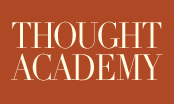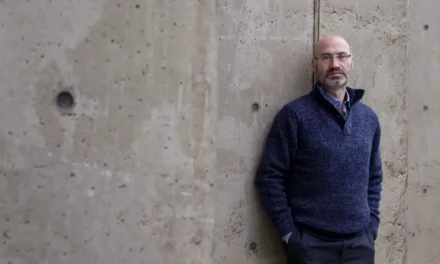
Forging a Life of Purpose and Resilience
Y
our child’s curiosity, critical thinking, and creativity—sparked in earlier chapters—need more than fuel. They need a guiding star. This final chapter helps you raise a child who doesn’t just explore ideas, but lives by them. It’s about crafting a worldview: one built on reason, resilience, and meaning. From Ancient Greece’s bold debates to the buzzing cafés of Paris, history reminds us that purpose-driven minds shape better futures. Now, your home can carry that legacy forward.
Unlike earlier chapters that focused on skills, this one centers on values. We help children move from asking “What is this?” to wondering “What matters most?” From small moral questions to long-term ambition, you’ll guide them in building a compass for life. These are kids who don’t just think—they act with courage, weather setbacks, and stand by what’s right.
You don’t need to be a philosopher. You just need to stay present—asking, listening, and helping your child explore what they believe and why. Questions like “Why does this matter to you?” or “What could you build with this idea?” can turn an ordinary evening into something lasting. Start tonight, and you begin raising a child who thinks clearly and lives wisely.
Here is the journey ahead:
- Embracing Reason and Self-Worth: In Ancient Greece, thinkers like Socrates carved truth from chaos by reasoning aloud in public spaces. They showed that clarity doesn’t come from shouting the loudest—it comes from trusting your mind. Today’s children grow up in a noisy world, where confidence can be easily shaken by peer pressure or confusion. This section matters because reason and self-worth form the foundation of a resilient life. When kids learn to question clearly and value their own thoughts, they become steady in storms. Unlike Raising Thinking Machines’ focus on logic, here we use reason to help them understand who they are and how to live well. Asking, “What made you think that?” or “What did you change your mind about?” helps them anchor themselves in thoughtful conviction, not just opinion.
- Pursuing Purpose with Passion: The Renaissance wasn’t just a time of art—it was a time of ambition. Builders, painters, thinkers, and explorers poured themselves into great projects. They dreamed, but they also planned. They didn’t just follow their whims; they tied their gifts to a purpose. That’s what our children need too. They may love to build, tinker, or imagine—but those sparks fade if they don’t see where it’s going. They need to understand what it means to commit. To set a goal. To follow through. This section is about helping kids go from scattered energy to grounded vision. Not every idea needs to turn into a lifelong pursuit—but some deserve more than a passing glance. We help them notice what excites them, identify what matters most, and take the first small steps toward something lasting. When purpose and passion align, momentum follows—and your child begins to understand what it means to build a life that matters.
- Mastering Emotional Resilience: Enlightenment thinkers like John Locke championed self-mastery, using calm resolve to face uncertainty with clarity. Kids, too, face daily setbacks—lost games, unfair moments, unexpected change—that can shake their confidence. But resilience turns those stumbles into growth. This section gives you what you’ll need to provide your child the emotional tools to stay steady—not through intellect alone, but through strength of heart. Questions like “What can you control here?” create space to pause, reflect, and re-center. Here we guide children toward inner steadiness, so they can face disappointment without breaking stride. By modeling emotional courage and composure, you help your child develop grit, flexibility, and peace of mind. A resilient thinker, shaped by your warmth, becomes a steady force in a shifting world.
- Living with Virtue and Balance: In Vienna’s coffeehouses, poets, artists, and scientists debated questions of justice, courage, and fairness—ideas that didn’t stay on the page but shaped how they lived. Children, too, face daily moral choices: standing up for a friend, sharing fairly, acting with integrity when no one’s watching. Yet peer pressure and uncertainty can cloud those decisions. This section helps clarify them. Questions like “What’s a brave choice you can make?” create a home where values are named and practiced. Unlike Chapter 1’s focus on expression, here we emphasize action—what it means to do the right thing, even when it’s hard. By modeling virtues like fairness and courage, you help your child develop a steady inner compass—one that guides them not just through childhood, but through a life of principled strength.
- Integrating Philosophy into Daily Life: Paris’s cafés buzzed with thinkers like Sartre, weaving ideas into the fabric of daily life. Their philosophy wasn’t abstract—it was lived, debated over coffee and carried into streets and studios. Children, too, need space to anchor their values and thinking in everyday routines. But in the rush of meals, carpools, and chores, those deeper threads often fray. This section helps tie them back together. Questions like “How can we think this through?” turn ordinary moments into touchstones for reflection. Unlike Chapter 5’s focus on learning, here we build habits that make thoughtfulness part of family life. When children see wisdom practiced daily—through plans, decisions, and quiet rituals—they learn that a meaningful life isn’t built in grand declarations, but in the steady rhythm of intentional living. Your presence makes that rhythm real.
- Creating Value as a Producer: In Paris’s cafés, artists like Picasso crafted works that shaped culture, showing the power of creating value through vision and effort. In today’s fast-moving world of instant answers and likes, children may begin to feel that effort doesn’t matter. But producing something meaningful—whether a drawing, a design, or a solution—builds lasting pride. This section invites children to see themselves not just as consumers, but as producers, contributing through their strengths. Unlike Chapter 4’s focus on teamwork or Chapter 3’s on creative play, here we focus on tangible outcomes. Questions like “What value can you create?” shift the goal from praise to purpose. With your encouragement, your child can begin to see their work—ideas, projects, improvements—not just as expressions of self, but as gifts that shape the world.
Begin tonight with a question, and watch their purpose soar.
Table of contents

Primordial Soup for the Mind: Navigation
Navigate the book Primordial Soup for the Mind.



